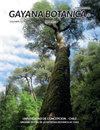渗透胁迫对两种小麦基因型生理效应的比较
IF 0.5
4区 生物学
Q4 PLANT SCIENCES
引用次数: 1
摘要
揭示植物的抗逆性机制将有助于选择在不利环境中生存能力更高的作物品种。在这方面,有必要确定可能有利于提高植物抗逆性的生理特征。以2个抗旱性不同的普通小麦品种(Triticum aestivum L.)为研究对象,用20%聚乙二醇8000处理48 h,引起了不同程度的渗透和氧化胁迫,并产生了不同的生理反应。与品种“妮基”相比,品种“吉尼斯”的叶片保水能力更好,膜损伤程度更小,这与前者通过积累更多的脯氨酸和更高的抗氧化清除能力来增强渗透调节有关。与可溶性糖和总游离氨基酸相比,脯氨酸对保持叶片水分的贡献更大。据推测,这些特征的组合将为该品种设置基因型优势,这也将决定该品种在田间干旱条件下的更好表现。本文章由计算机程序翻译,如有差异,请以英文原文为准。
Comparison of physiological effects of osmotic stress on two wheat genotypes
Revealing stress tolerance mechanisms in plants would contribute to the selection of crop varieties with a higher capacity for surviving in unfavourable environments. In this regard, it is essential to identify possible physiological features that might be beneficial for increasing plant resistance to stress. Two contrasting common wheat (Triticum aestivum L.) cultivars with different drought tolerance were subjected to 48 h treatment with 20% polyethylene glycol 8000, which provoked an extra degree of osmotic and oxidative stress as well as distinct physiological responses. Better water retention capacity in leaves and lesser extent of membrane injury found in cultivar ‘Guinness’ compared to cultivar ‘Niki’ correlated with increased osmotic adjustment by accumulating higher amounts of proline and higher antioxidant scavenging capacity in the former. Compared to soluble sugars and total free amino acids, proline contributed to a greater extent to preserving leaf water. It was speculated that such a combination of features would set a genotypic advantage for this cultivar, which could also determine better performance under drought conditions in the field.
求助全文
通过发布文献求助,成功后即可免费获取论文全文。
去求助
来源期刊

GAYANA BOTANICA
Agricultural and Biological Sciences-Plant Science
CiteScore
0.70
自引率
0.00%
发文量
8
审稿时长
6-12 weeks
期刊介绍:
The journal welcomes works carried out by scientists of all nationalities, and may be written in either English or Spanish. The journal receives works in systematic, taxonomy, floristic, ecology, physiology, morphology, development, conservation, cytology and phytochemical botany.
 求助内容:
求助内容: 应助结果提醒方式:
应助结果提醒方式:


